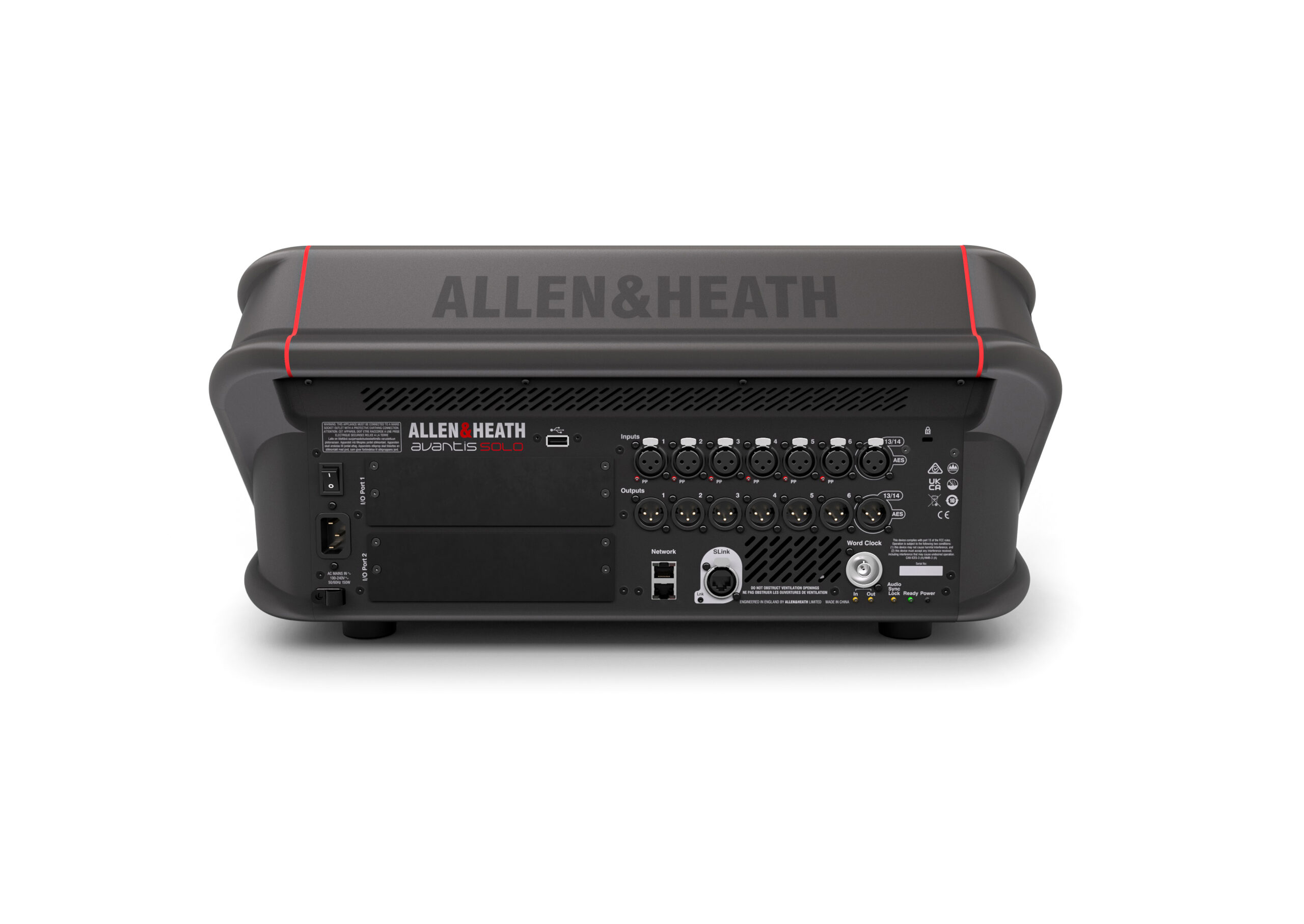-
 play_arrow
play_arrow
Clubalicious Clubalicious Radio
-
 play_arrow
play_arrow
London Calling Podcast Yana Bolder

Taken from our April, 2025 issue, Steve La Cerra’s deep dive into the Allen & Heath Avantis Solo console is the longest product review in Mix history! Since it runs nearly 5,000 words, we’re doing something we’ve never done before: breaking it up across multiple parts to make it more manageable to read online. Don’t pass up Part 1, Part 2 and Part 3!
NETWORK CONTROL
Allen & Heath offers several free apps to use alongside Avantis: Director, MixPad and OneMix. Avantis Director enables online control of the desk, as well as offline file prep. MixPad allows remote control of the desk using an iPad or other smart device (you supply the WiFi router), while OneMix is a simplified version of MixPad that restricts control to a single Aux (monitor) mix.
An Admin user can set up various smart devices to permit each musician to control only their own monitor mix. These all worked as expected, and I liked the idea of having MixPad open while using the Solo because it facilitated access to frequently used pages or allowed me to leave it parked on the DCA page while using the mixer surface to control inputs.
GRAPHIC EQ
The stock GEQ on all output buses is 28-band, with four options for Q (bandwidth): Constant-Q, Proportional-Q, Digi-Q, and Hybrid—an Allen & Heath exclusive whereby boost is proportional-Q for smooth boost settings, while cut is Constant-Q, enabling clinical 1/₃-octave attenuation with minimal band interaction. GEQ can be adjusted by sliding faders with your finger on-screen, tapping a frequency slider and using the T&T, or mapped to faders by switching to GEQ Mode, which is accessed by holding the dedicated GEQ button on the lower-right of the control surface and tapping the Name Block of the channel you want to access. At that point, the faders are swapped to control the GEQ, with frequencies displayed above the channel rotaries.
Mapping the GEQ to faders is a little awkward because there are 12 faders but 28 bands of EQ. Page one shows the first 11 bands. Tap GEQ again to access page 2 (the second set of 11 bands) and again to access the remaining bands. Tapping GEQ a fourth time cancels GEQ mode and, unfortunately, there’s no way to go backward. The Reset button can be used to quickly reset the GEQ.

FX RACKS
The Avantis Solo contains a generous assortment of effects and the resources with which to use them. The console can route up to 12 FX sends, either mono or stereo, though using stereo sends uses double the bus allocation. FX sends are defaulted to post-fader but can be changed to pre-fader globally or per-channel. FX Returns are always stereo, so regardless of how you configure the mixer, you always get 12 stereo FX Return channels equipped with the same four-band PEQ found on the input channels.
The standard Avantis Solo FX package includes a wide variety of effects such as reverb, delay, chorus, flange, etc. Some of these are modeled after classic devices: Roland RE201 Space Echo and Dimension D chorus, AMS RMS16, Electro-Harmonix Electric Mistress flanger, and a host of others. All these effects sound fantastic and are eminently usable. The one thing I missed was a pitch-shifter. How am I supposed to generate the cartoon backing vocals for “Godzilla” without a pitch shift?
FX input and output routing are accessed by selecting the FX and pressing “Back Panel.” FX Sends are default-patched to their respective rack-slot inputs, but the input can be changed in the rear-panel view via drop-down menu. Outputs from the FX are permanently patched to their respective FX Return channels, which I don’t view as a limitation because I’ve spent way too much time on other mixers trying to figure out how to patch the output of an effect to an input channel.
A WINNER ALL AROUND
It’s clear that the folks at Allen & Heath spent a lot of time and effort planning the Avantis Solo. In addition to all its audio muscle, the desk has some clever and useful features, such as the Options and Listen controls, as well as the ease of which sends on faders is initiated. To that, you can add the Pk LED next to each layer button, which flashes if any channel on that layer peaks, the Fast Grab Tab, and the Reset, Copy and Paste buttons, all of which reduce time spent digging for menus. I found the work surface easy to get around and incredibly powerful in regard to routing and processing.
The Allen & Heath Avantis Solo is nothing short of a compact audio beast. While it may be based around a compact form factor, the feature set has not been made compact, and there’s not much that it can’t do, save for accommodating those who need more faders under their fingers. I can easily see it being paired with, for example, an A&H GX4816 (48×16 expander) or AR2412 (24×12 expander) to form a flyable monitor rig, or used in venues where space is at a premium. The touchscreen is bright, the graphics are clear, the controls have a solid feel and it sounds great. Kudos to Allen & Heath for a job well done!
COME BACK TOMORROW FOR THE CONCLUDING SUMMARY AND A DIVE INTO DEEP PROCESSING WITH DPACK!
Written by: Admin
Similar posts
Recent Comments
No comments to show.Featured post

Latest posts
Current show
Upcoming shows

Get Twisted
Tough Love
09:00 - 10:00
On Air
Anna Tur
10:00 - 11:00
Fresh Is Fresh
This Weeks Hottest Releases
11:00 - 16:00
Redolent
DJ Chus
16:00 - 17:00
Hot House Hours
Dave Baker
17:00 - 18:00Chart
Powered by Dee jay promotions visit us













 Invalid license, for more info click here
Invalid license, for more info click here